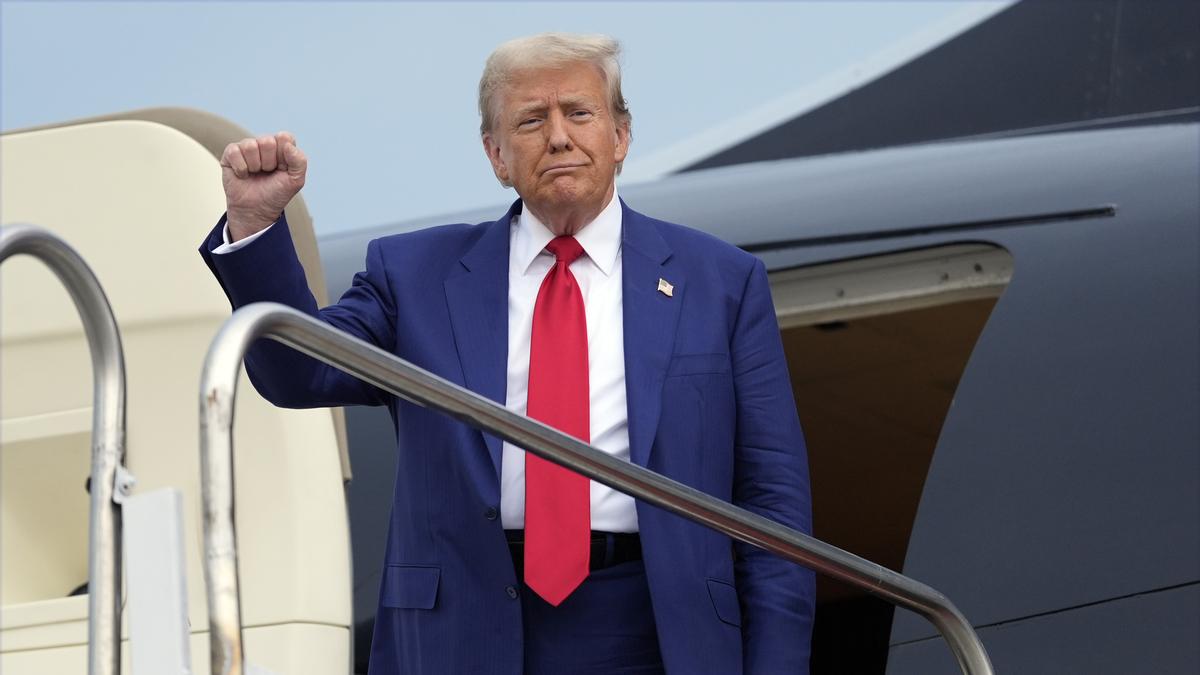Donald Trump has made a surprising announcement, promising to make IVF treatment free for women if elected President in 2024. While the specific details of how this policy would be implemented are yet to be revealed, this statement has sparked significant debate. This announcement is a strategic move on Trump’s part as he attempts to rebrand himself on the issue of reproductive rights, especially in the face of a divided nation where abortion rights remain a central political issue.
Free IVF: A Promising Policy?
Trump’s announcement to make IVF treatment free has been met with both optimism and skepticism. While proponents applaud the potential to reduce financial barriers for those seeking to build a family through IVF, concerns remain about the logistical complexities and funding source for this policy.
Benefits of Free IVF
The financial burden of IVF can be daunting, often amounting to tens of thousands of dollars per cycle. Many individuals and couples struggle to afford multiple cycles, which are often necessary for achieving pregnancy. Free IVF would eliminate this financial obstacle, potentially increasing access to the treatment and enabling more people to pursue parenthood through this method.
Concerns About Feasibility and Funding
While the intention to make IVF free is well-intentioned, questions arise regarding the practicality and financial viability of such a program. The cost of providing free IVF for all Americans would be substantial, requiring significant government funding or a mandated shift in insurance coverage. The complexities of implementing and managing such a program, along with the potential impact on healthcare spending, also need to be carefully considered.
Trump’s Shift on Abortion
Trump’s focus on free IVF is viewed as a calculated move to appear moderate on the issue of reproductive rights. The decision by the Supreme Court to overturn Roe v. Wade has inflamed tensions in the U.S., pushing many voters to take sides in this critical debate.
Attempts to Position Himself as Moderate
While previously supporting the overturn of Roe and praising the state-level restrictions on abortion, Trump’s stance on IVF and his public criticism of Florida’s six-week abortion ban are aimed at attracting voters concerned about limiting reproductive choices. This strategy emphasizes his support for access to reproductive healthcare while deflecting accusations of being anti-choice.
Aligning with Potential Voters
Public opinion polls show strong support for safeguarding access to IVF, including among Republicans. By positioning himself as a champion for IVF, Trump aims to win over these voters, particularly those who view the overturn of Roe as an extreme stance. This approach reflects the political reality of navigating a divided public on this sensitive issue.
Repercussions and Responses
Trump’s announcements about free IVF and his ambiguous stance on abortion have drawn reactions from various political factions. His critics have accused him of hypocrisy and trying to distract from his controversial record on women’s rights, while supporters praise his focus on family and reproductive choice.
Republican Party’s Divided Stance
The Republican Party remains divided on the issue of abortion. While Trump’s running mate, Senator JD Vance, has affirmed that Trump would not support a national abortion ban, it remains uncertain how the GOP will solidify its position on this issue, especially considering the varying stances on state-level restrictions.
Democratic Response
The Democratic party has capitalized on the overturning of Roe v. Wade, making reproductive rights a central campaign platform. Democrats are attempting to energize voters with concerns about women’s rights and the potential erosion of individual freedoms.
Trump’s Focus on the Battleground States
Trump’s focus on promoting policies that appeal to swing voters underscores his campaign strategy. He has been actively campaigning in battleground states, including Michigan and Wisconsin, regions that were pivotal in his 2016 victory and where the upcoming election is expected to be close.
Aiming for Reacquisition
Trump is actively attempting to win back these states that he lost in 2020, positioning himself as the champion of their interests. His focus on issues such as economic concerns, the affordability of family life, and access to reproductive healthcare speaks to these regions’ demographic makeup and potential concerns.
Competition for the Presidency
As the election approaches, Trump’s campaign faces a major challenge in responding to the candidacy of Vice President Kamala Harris. Harris, as a prominent figure in the Democratic party, has the potential to motivate Democratic voters and sway independent voters who might be dissatisfied with the incumbent president.
Take Away Points
- Trump’s policy announcement to make IVF free if elected President is a significant development, sparking debate about its feasibility and potential impact on healthcare policy.
- His evolving stance on reproductive rights, encompassing support for IVF access while opposing Florida’s six-week abortion ban, reflects his attempt to navigate the politically sensitive landscape of abortion and fertility rights.
- The potential cost of implementing free IVF nationwide presents a substantial financial challenge, raising concerns about its budgetary impact.
- Trump’s campaign strategy is centered on winning back key battleground states where voters are sensitive to issues of affordability, healthcare access, and women’s rights.
- The Republican party remains divided on abortion policies, with diverse views on state-level restrictions.
- The upcoming election will likely center on issues of reproductive rights, affordability, and healthcare access, influencing voter choices and potentially determining the outcome of the 2024 presidential election.




